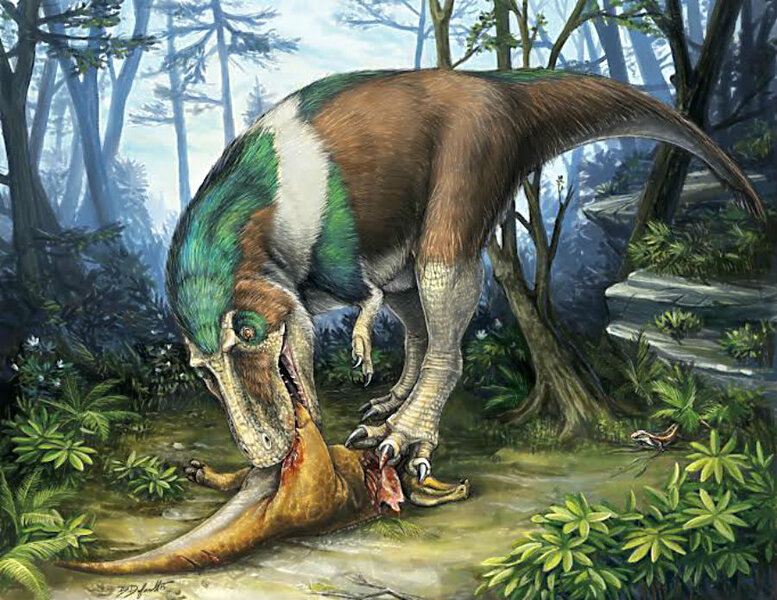Did dinosaurs look less scary than we have imagined?
Loading...
It turns out dinosaurs might not have been the fang-bearing menaces movies like Jurassic Park have made them out to be, thanks to a new study suggesting that dinosaurs might have had lips covering their teeth.
"In popular culture, we imagine dinosaurs as more ferocious-looking, but that is not the case," University of Toronto vertebrate paleontologist Robert Reisz, who carried out the study, said in a press release.
Dr. Reisz looked at today's reptilian predators, such as monitor lizards and crocodiles, for hints at what theropod – or "beast footed" – dinosaurs might have looked like. Crocodiles have exposed teeth and no lips, similar to the common perceptions of the dinosaur, while monitor lizards have lips that conceal their teeth, similar to how popular media portrays the velociraptor.
Reisz explains that lips protect the teeth by keeping them in a moist environment so they don't dry out. "We propose that this requirement of hydration is not possible to maintain if the tooth is exposed permanently," he told CNN.
Reptiles like monitor lizards need lips because they live on dry land, while crocodiles don't need lips because they spend time in water, so "the comparison is flawed," according to Reisz.
Therefore, he concluded that the land-roaming dinosaur likely would have had lips as well, like the monitor lizard. "It's also important to remember that teeth would have been partially covered by gums. It we look at where the enamel stops, we can see that a substantial portion of the teeth would be hidden in the gums," said Reisz, adding that on a living animal, the teeth would have therefore appeared smaller.
Reisz and his colleague Derek Larson tested the theory by analyzing tusks, terrestrial mammals' exposed teeth that don't have enamel, and comparing them to theropod dinosaurs' teeth, which have well-preserved enamel. Their findings suggest that theropod teeth were not permanently exposed, but rather covered by lips.
"The relationship between teeth and their surrounding tissues, both hard and soft, is very interesting, and we have extended it to an area that has bothered me for so long, that the large theropod dinosaurs are depicted with their teeth sticking out," Reisz tells The Christian Science Monitor in an email. "The normal pattern for living animals that live on land is to have the teeth covered by tissue, essentially lip-like structures, whether they are terrestrial amphibians, lizards, snakes, or mammals (birds and turtles do not have teeth)." All dinosaurs likely had teeth covered by lips, he adds.
The research was presented on May 20 at the Canadian Society of Vertebrate Paleontology at the University of Toronto, Mississauga.
"This is ongoing research," writes Reisz, who says he has been drawing comparisons to living animals' teeth for several years. "[I] hope to complete and publish on it soon."





